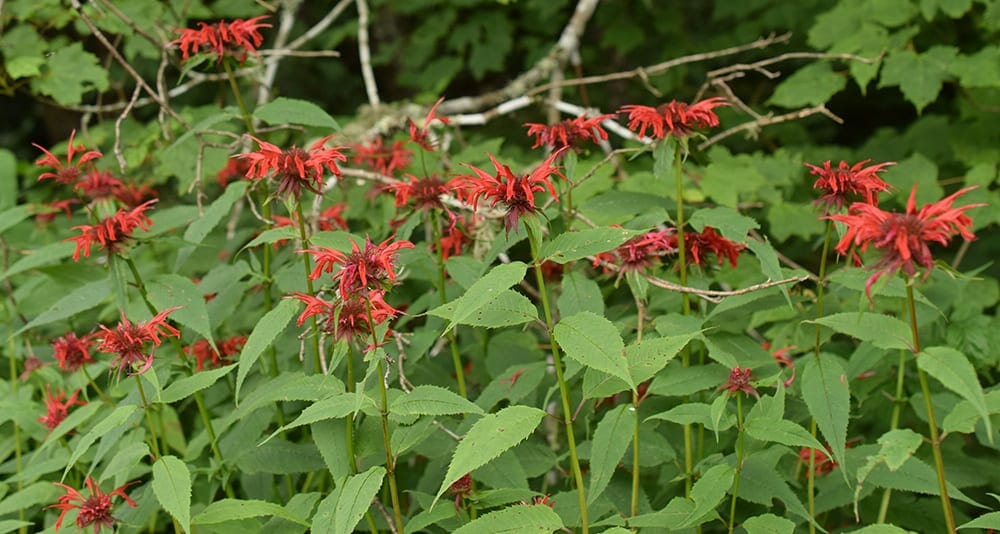My seasonal choice for this month’s newsletter always reminds me of fireworks, which I think is appropriate for early July. Scarlet beebalm (Monarda didyma) or Oswego tea is a perennial native plant in the mint family (Lamiaceae) blooming now. In Georgia, the natural reported range is just four northern counties but this is a plant that is much loved by gardeners so it is probably growing in almost all the counties by now. I have seen it growing naturally at Lake Winfield Scott in Union County.
According to Linda Chafin’s Field Guide to the Wildflowers of Georgia, its habitat is “seepy areas and on stream banks in the Blue Ridge” area of the state. The individual tubular flowers are clustered in a terminal arrangement on the top of a square stem. As the early flowers fade, a ring of outer ones represents the last of them. In ideal conditions, stems can reach up to 6 feet. Of course, like most plants in the mint family, it will spread, so site it where spread can be tolerated or share extras with friends. When kept moist, cuttings can be rooted or use pieces of the roots.
The genus Monarda is named in honor of a 16th century Spanish physician and botanist, Nicolas Monardes (1493-1588). This particular species can be susceptible to powdery mildew; the cultivar ‘Jacob Cline’ is one selected for resistance to that with no detriment to pollinators. The flowers are attractive to hummingbirds and large butterflies as well as bees.


